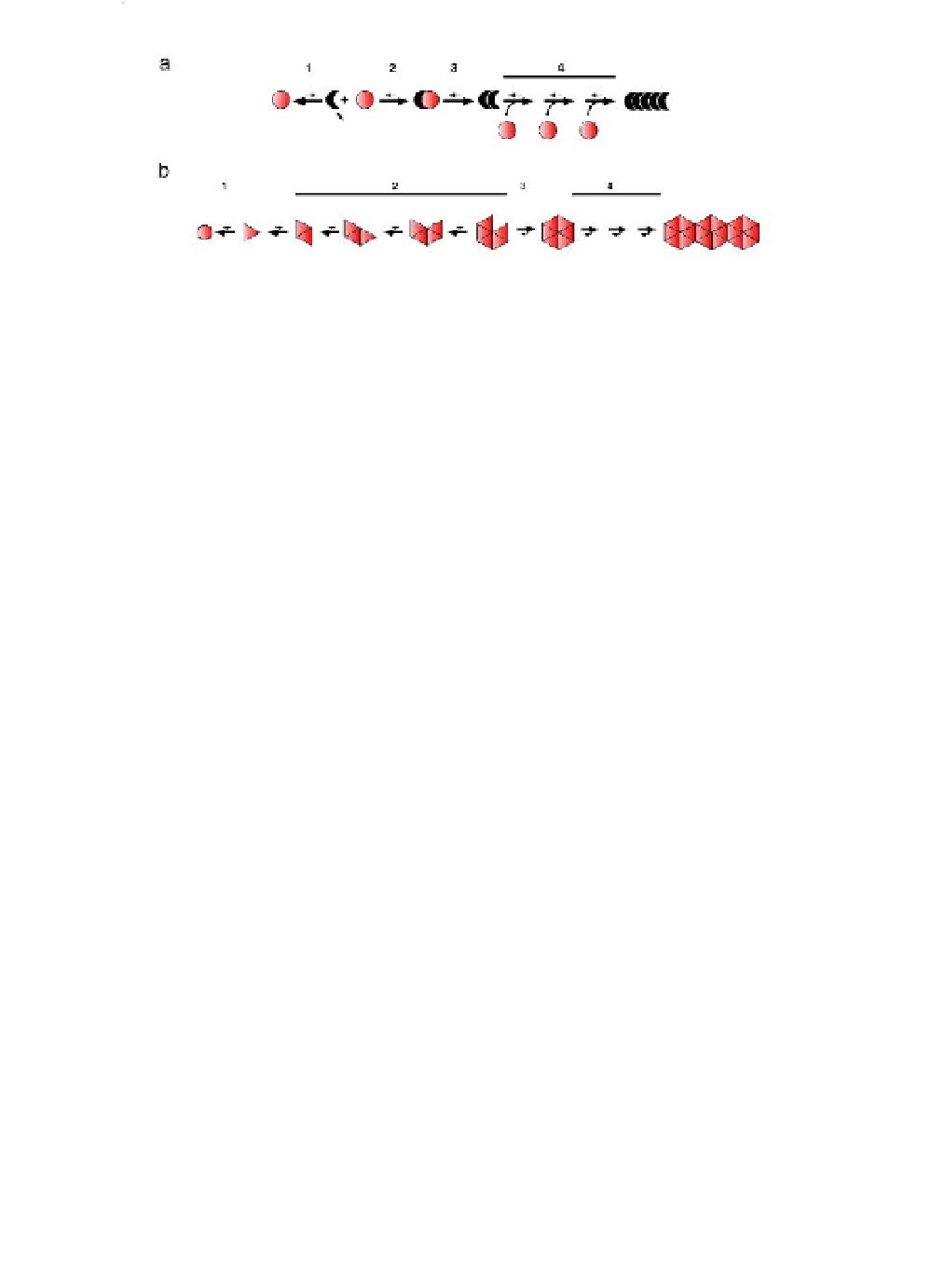Biology Reference
In-Depth Information
Figure 6.4
Theoretical models for prion propagation.
(a) Template
assistance model.
(1) The constitutive form of the prion protein
undergoes a conformational change that leads to an abnormal
form. This event either occurs at a low frequency, where the
abnormal form is unstable, or is highly sensitive to clearance.
Thus, the concentration of the abnormal form is low. (2) The
prion protein in its abnormal form interacts with the constitutive
form. (3) The constitutive form of the protein is converted into
an abnormal form through this interaction. (4) The abnormal
homodimer can grow indefinitely by incorporating additional
prion molecules following their conversion into an abnormal
form. It can also fragment. Each fragment is capable of growing
by incorporation of converted prion molecules. (b) Seeded-
polymerization model.
(1) Following a seminal conformational
change, the abnormal form of the prion protein acquires the
ability to interact with another prion molecule in an abnormal
form. The interaction is unstable because the intermolecular
interactions are not strong enough to outweigh the entropic
cost of binding. (2) Thus, the low molecular weight oligomers
that are formed dissociate until a stable nucleus is formed. (3)
This nucleus or seed can grow indefinitely from one or both
ends depending on the structural properties of the abnormal
form of prion protein. (4) It can also break into smaller stable
fibrils that can elongate by incorporation of the abnormal form
of the prion protein. The monomeric and oligomeric forms of
the abnormal prion can be of exogenous origin in iatrogenic or
dietary infections in vertebrates. See also Colour Insert.
The native monomeric prion molecule P is in equilibrium with a
rare and unstable conformational isoform P
*
according to the seeded-
polymerization model (Fig. 6.4b). Because P
*
is unstable, or highly
sensitive to clearance, its concentration is very low. However, unlike
P, P
molecule. Similar to a classical
crystallization event, it is thought that the formation of low molecular
weight oligomers of P
*
can interact with another P
*
*
are not energetically favourable until a

Search WWH ::

Custom Search